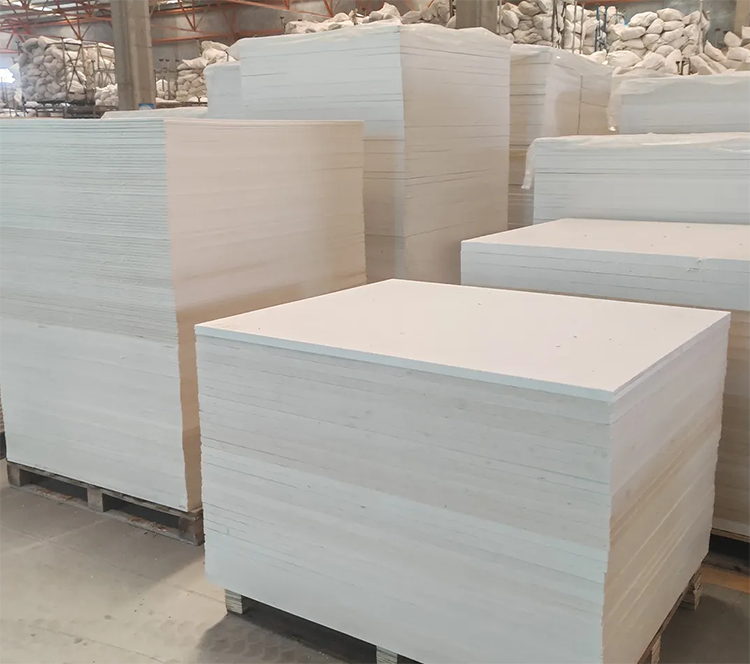Heating Furnace Refractory Insulating Lining — Ceramic Fiber Board
Product Overview
The refractory insulating lining for heating furnaces plays a critical role in furnace construction, alongside refractory bricks. One of the most commonly used materials for this lining is aluminum silicate ceramic fiber board with a typical thickness of 10–50 mm.
According to the form of lining materials, furnace linings are classified into brick linings, fiber linings, and monolithic linings. A typical lining structure includes both refractory bricks and insulating materials such as ceramic fiber boards. When clay insulating bricks or ceramic fiber products are used, they offer both excellent insulation and refractory performance due to their low thermal conductivity. As a result, these materials can serve as both the working lining and insulation layer.
Production Process of Ceramic Fiber Board
The ceramic fiber board for furnace linings is produced by mixing ceramic fibers into a water-based binder solution. This slurry is then vacuum-formed into a mold until the desired thickness is achieved. After natural setting, the wet mat is demolded and dried to obtain the final product.
Common dimensions for ceramic fiber boards used in heating furnace linings are 1000mm × 600mm, with thicknesses ranging from 10mm to 50mm.
Traditional Heavyweight Lining vs Lightweight Ceramic Fiber Lining
Traditional Structure:
-
Composed of refractory bricks and dense castables.
Drawbacks of Traditional Furnace Lining:
-
High bulk density, which can cause deformation of the furnace’s steel structure.
-
High thermal conductivity, resulting in poor insulation. The outer furnace shell can reach 150–170°C, causing serious energy loss and an uncomfortable working environment.
-
Prone to deformation due to thermal expansion inconsistencies, especially in ring furnaces.
-
Poor thermal responsiveness, which affects the accuracy of automatic temperature control systems, ultimately impacting product quality.
Key Advantages of Lightweight Ceramic Fiber Lining
Applications:
Ideal for furnace linings, boiler insulation, heat treatment systems, and glass furnace crown insulation.
Main Features:
-
Low density: The ceramic fiber board lining weighs only 20% of a traditional lightweight heat-resistant lining.
-
Low heat storage: Ceramic fiber has only 1/9 of the heat capacity of lightweight refractory linings, significantly reducing energy consumption during heating cycles.
-
Low thermal conductivity: Offers only 1/7 of the thermal conductivity of lightweight fireclay bricks, and 1/9 that of traditional insulating linings, dramatically improving energy efficiency.
-
Excellent thermal sensitivity: Ensures better response to automated control, making it ideal for modern heating furnaces.
If you are looking for high-performance, energy-efficient insulating materials for your heating furnaces, our ceramic fiber board linings are the ideal solution. We are a trusted supplier of high-quality refractory materials, ready to meet your specific needs.
Contact Us for Inquiries and Custom Solutions:
📞 Tel/WhatsApp: +86-13903810769
📧 Email: inquiry@rsrefractorychina.com
🌐 Website: https://rsrefractorychina.com

